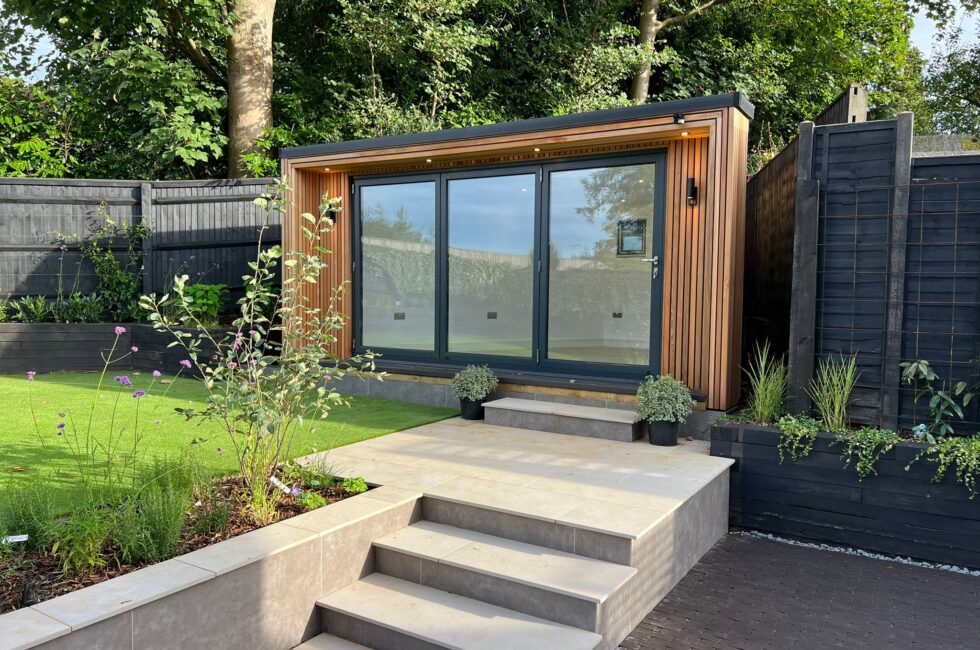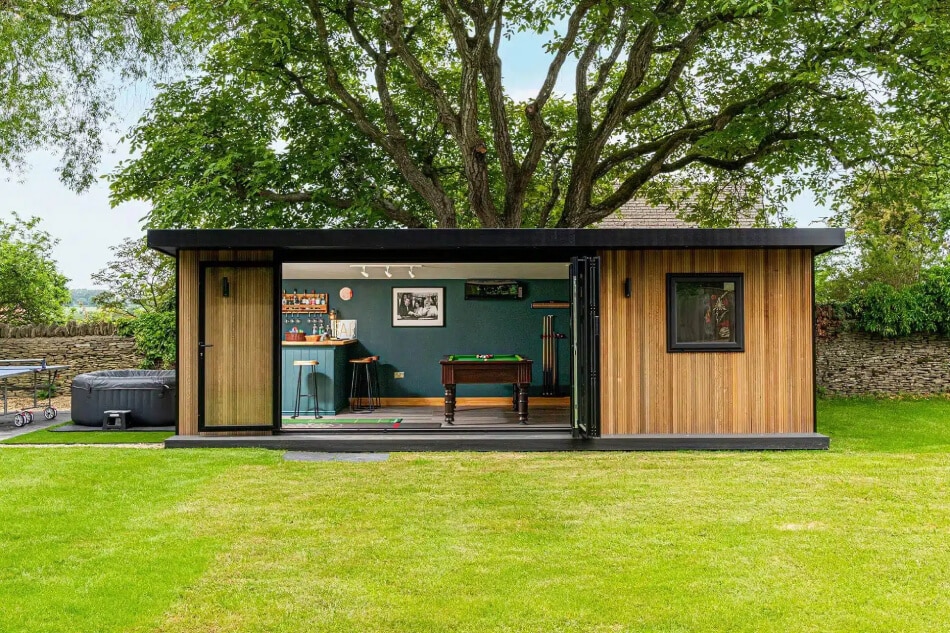Handy Ideas On Planning Permission On Garden Outhouses
Handy Ideas On Planning Permission On Garden Outhouses
Blog Article
What Is The Planning Permit Required For Garden Rooms As Well As Other Changes Of Use?
Planning permission might be required for the construction of gardens, conservatories, and outhouses. The following are some key aspects to take into consideration when seeking permission for a change in use:
If you plan to transform an unresidential structure (like a garage or an agricultural building) to a residence or garden office the permission to plan is normally required. This is due to the fact that it is a change of the use class of the building.
Garden Rooms as Living Accommodation:
The use of a room within the garden as an independent living space (e.g. guest house or rental unit) is considered a change in the usage. It is necessary to obtain permission to plan the area in order to ensure that a building meets the residential standards.
Business Use:
You may need planning permission if you plan to utilize a garden space or conservatory for business purposes, such as an office or location of business that has frequent visitors or employees. This is due to potential effects on the neighborhood such as noise, traffic and parking.
Educational or Community Use
The conversion of the space from a garden area to an educational or community space (such an a meeting hall or classroom) requires approval from the planning department. The local authority assesses the suitability of the site and its impact on surrounding areas.
The impact on local infrastructure
Typically, any change to usage that has an impact on local infrastructure (such as roads, drainage or public services) will require planning approval. These impacts will be evaluated by the local planning authority as part of their application process.
Dual Use
Planning permission is required to clearly define and control the various functions of the building.
A heightened footfall and traffic:
If the proposed change in usage could result in increased traffic or increase the amount of people who use the area (e.g. the conversion of the garden into a shop) the approval of the planning department is needed to minimize the effect on the surrounding areas.
Building Regulations conformity:
Although it is not an issue planning permissions, any change in use must adhere to construction regulations that address security, health and energy efficiency standards. This is especially relevant in the case of conversion to a habitable space.
Environmental Impact:
Changes in use that may affect the environment, like the conversion of agricultural land to residential development, require planning permission. A environmental assessment could be required as part of an application.
Community and Amenity Impact:
A key consideration is how the project will impact on the local community and its character. For instance for converting a space within the garden to a café shop, you need approval for planning. This is to ensure that it is compatible with community plans while also preserving local amenities.
Designated Zones
In areas designated as conservation zones, National Parks, or Areas of Outstanding Natural Beauty (AONB) Changes in usage are subject to more strict controls to preserve the character and appearance of the area. Planning permission is necessary in these situations.
Local Planning Policies
Local planning authorities can have policies that differ widely on the subject of changes to usage. Consult the policies to find out the kind of changes that require permission, and what criteria are required.
Planning permits are often required for a significant modification in the purpose or the location of a gardenroom conservatory office, outhouse, or extension. The new usage must be suitable for the area, conform to the federal and local planning regulations and address any potential environmental and social negative impacts. Consult your local planning authority as early as you can during the planning phase to identify the requirements and to obtain the necessary approvals. See the most popular out house garden for site advice including Tring garden rooms, outhouse building, garden room or extension, do i need planning permission for a garden room with toilet, garden outhouses, outhouse, gym outhouse, what size garden room without planning permission, luxury outhouse, outhouse garden rooms and more.
What Height Limitations Do You Have To Be Aware Of When You Design Gardens?
The height limits of a specific building will determine whether planning permission is required for garden rooms, conservatories or outhouses. The following are some of the key height-related factors to consider:
The maximum height allowed for an outbuilding without a connection (or extension) equipped with a double-pitched roof (such as the gable roof) is 4 metres.
Other types of roofs (flat, one-pitched, etc.) are able to have heights that don't exceed 3 meters. The height maximum for any other type of roof (flat or single-pitched) is 3 meters.
Proximity to Boundaries
The maximum height of a building cannot exceed 2.5 meters if it's within 2 meters of the property line. This is applicable to sheds, garden rooms and similar outbuildings.
Height of Eaves:
The length of the eaves (the distance from the roof's lowest point up to the highest eaves elevation) of any structure must not exceed 2.5 metres.
Conservatories and extensions
The height of a rear extension with a single story cannot exceed 4 metres. This is inclusive of the roof and any parapet wall.
Side Extenders
Extensions to the sides should not exceed 4 metres, and must not be greater than 50% of the original size of the home.
Special Roofs
Roofs that have a surface that is flat are restricted to a max 3 m in height.
Additional restrictions in designated zones:
In conservation areas, Areas of Outstanding Natural Beauty (AONB), and other designated areas, more stringent limits on height may be in place, and planning permission may be required for structures that otherwise be subject to permitted development rights.
Buildings in National Parks:
Like designated areas, structures within National Parks may have additional height restrictions requiring planning permission.
Roof Design
Height of highest part of roof (excluding chimneys and antennas) Be aware of the elevation of the top part of the roof (excluding chimneys and antennas.). Planning permission may be required if the highest point of the structure exceeds the building limit that is permitted.
Neighbours' impact:
Even if an object is within the allowed maximum height but planning permission may be needed if the effect on the privacy of neighboring properties or view is significant.
Maximum Height of Overall Height:
The maximum height of any structure is four meters. For instance, an office in the garden with an eaves-pitched roof must not exceed 4 meters at its tallest point.
Decking, Platforms, or Platforms
In order for the structure to not need permission for development The decking or platform attached must not be higher than 0.3 metres above the ground.
Inquiring with local authorities for any recent changes or rules is always recommended. Even if your development falls under the permitted development rights of general law, local variations or property conditions could require permission to plan. Take a look at the top rated garden room or extension for blog recommendations including outhouse builders, insulated garden rooms, costco garden rooms, garden outhouses, garden office hertfordshire, garden room vs extension, what size garden room without planning permission uk, outhouse building, garden room planning permission, 4m x 4m garden room and more.
Regarding Agricultural Land What Type Of Planning Permit Will You Need To Build Gardens, And Other Structures?
If you are thinking of building garden rooms conservatories, outhouses and conservatories garden offices, or extensions on land that is agricultural There are certain planning permission requirements and restrictions to consider. Here are some key points:
The land that is used for agriculture can be used for farming activities and related ones. Changes in the use of the land for residential or for garden structures typically requires approval for planning. This is due to shifting the land from its original agricultural use.
Permitted Development Rights:
Residential and agricultural land are subject to distinct permitted development. In some cases agricultural structures can be erected with no planning permission. However, these rights are only available to farming structures.
Dimension and scale:
The scale and size of the building determines whether or not planning permission is required. The likelihood of requiring permission is higher for larger buildings and those which cover a large area of land.
The impact on agricultural use
If the new structure reduces the amount of land available for livestock or crops, then planning permission may be needed.
Green Belt Land:
If the land is designated as Green Belt, there are further restrictions to stop the spread of urban sprawl as well as preserving open space. Typically, any new building situated on Green Belt property requires planning approval and must satisfy the strict requirements.
Design and Appearance:
The new structure's design and appearance must be in keeping with the rural characteristics of the area. The building should not create a negative impression on the surrounding landscape.
Environmental Impact:
The impact on the environment is a factor for any construction on land that is agricultural. A environmental assessment could be required to obtain approval for planning to ensure that the new structure won't cause harm to wildlife habitats or the local ecosystem.
Nearness to buildings that are already in use:
The planning requirements may be affected by how close the planned office or garden room is to existing structures for agriculture. Constructions that are built near existing farm buildings could be seen differently than the ones in open fields.
Access and Infrastructure
The impacts on access and infrastructure, such as water supply, roads, and waste management, needs to be taken into consideration. If you apply for planning permission The city will determine whether the infrastructure can support the building.
Use the Class Order:
Planning law defines specific categories of land suitable for agricultural purposes. To ensure that the new use is compliant with local policies on planning and regulations, it's usually required to obtain planning permission prior to changing the classification.
Local Planning Policies:
Local planning authorities have specific policies pertaining for agricultural land. These policies can help decide whether planning permits are granted to non-agricultural constructions, while taking into account factors such as local development plans or the needs of the community.
National Planning Policy Framework
The UK National Planning Policy Framework is a framework that offers guidelines for the development of land and its use. The NPPF can be used to determine the application of planning permissions to structures built on land that is agricultural. It emphasizes the sustainable growth of rural areas and safeguards them.
Planning approval is required for extensions, conservatories, outhouses or garden offices on land that is agricultural. This is because the land has to be altered to meet local and national policies on planning. Contacting the local authority for planning is vital to identify the exact requirements and get the necessary approvals. Take a look at the most popular outhouse buildings for blog advice including garden rooms hertfordshire, garden rooms near me, garden room planning permission, ground screws vs concrete, outhouse for garden, what is a garden room, garden room conservatory, garden rooms in St Albans, outhouse garden, outhouse garden and more.